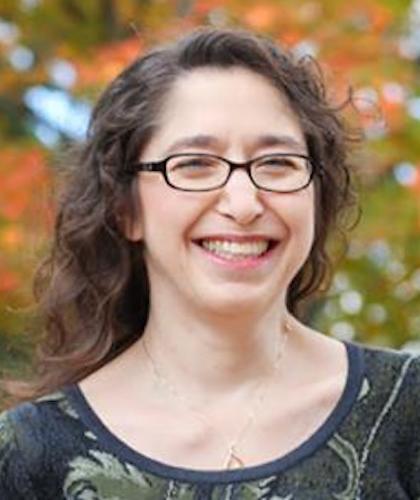
Newman, Rochelle
Chair
Associate Director
College of Behavioral and Social Sciences
Brain and Behavior Institute
Anyone who has used voice recognition software on their smartphone or GPS knows how poorly it works. Perceiving speech is difficult, extraordinarily difficult, yet even a 2-year-old can parse language with greater facility than a supercomputer. My research seeks to understand how and why.
Much of my research focuses on listening in noise. Many people have an image in their mind of the perfect learning or listening environment: a quiet room, where only one person is talking, and there are no other background noises interfering – but the reality is that this situation is exceedingly rare. Most of the time, listeners are trying to hear one voice while in the presence of multiple potential distractors, including the sounds of other people talking, traffic noise, and electronic noise. Children’s classrooms are constantly noisy, with the sounds of coughs, shuffling papers, and shifting bodies. These sources of noise have the potential to reduce both our ability to understand other speakers, and our ability to learn new information; but surprisingly, the types of noise that are most detrimental to adults are not the types most detrimental to children. As one example, the sounds of multiple people talking in a crowded room are far more distracting to an adult that is the sound of a single other conversation, but the opposite is true for young children. Understanding the extent to which different types of noise interfere with children’s learning and adult’s understanding has profound implications for our schools and daycare centers.
An additional focus of my research is how listeners adjust their perception for the varying ways that people speak. No two people speak the same way, and some differences can be quite drastic. How do adults identify that didjuh and did you both mean the same thing? How does a child come to realize that bat and pat mean different things, but car spoken by someone from the Chicago means the same thing as caah spoken by someone from Maine? As our society becomes more mobile, we are increasingly faced with speakers whose accents differ from our own; although understanding such speakers may cause noticeable decrements in normal conversation, difficulties often become more apparent when the listening conditions become poorer (as over a telephone, or in a noisy environment), or in high-stress, emergency situations.
Examining these types of problems is critical because it is exactly these tasks that cause the most difficulties for listeners who suffer any form of language or hearing impairment. Adjusting for differences among talkers is particularly challenging for individuals with age-related hearing loss, and recognizing speech in noise is problematic for children, second-language users, and listeners with hearing loss. By tying basic research on speech perception to the real-world problems faced by listeners, my work has bridged basic and applied research.
Research examples
The effect of sports-related concussion on children’s language skills
The effect of noise on infants' and children's language understanding
BACKGROUND
I am Chair of the Department of Hearing and Speech Sciences, as well as Associate Director of the Maryland Language Science Center. I helped found the UMD Infant & Child Studies Consortium and the University of Maryland Autism Research Consortium. I am also a member of the Center for the Comparative & Evolutionary Biology of Hearing. Within NACS, I have searched as the Director of Graduate Studies and chair of the admissions committee. In 2013, I was honored with the BSOS Outstanding Graduate Advisor award. My research focuses on speech perception and language acquisition. More specifically, I am interested in how the brain recognizes words from fluent speech, especially in the context of noise, and how this ability changes with development.
- Speech Perception
- Language acquisition
- Word-finding errors
- Word recognition
- Bilingualism
- Autism
- Concussion